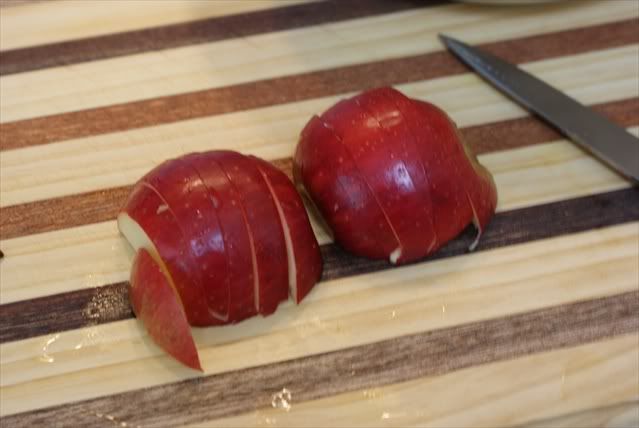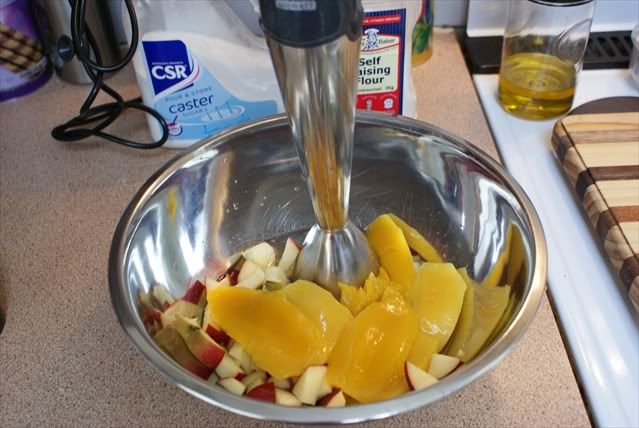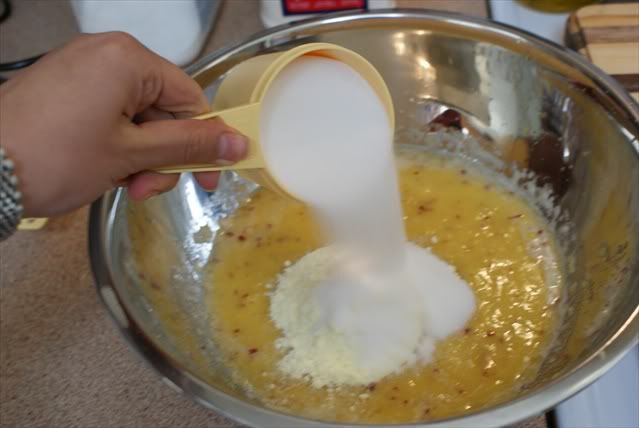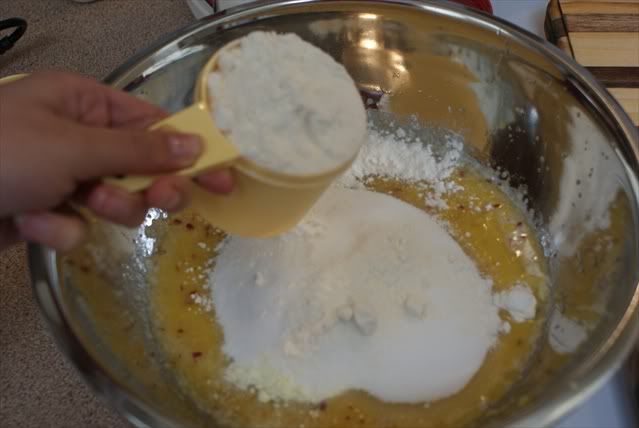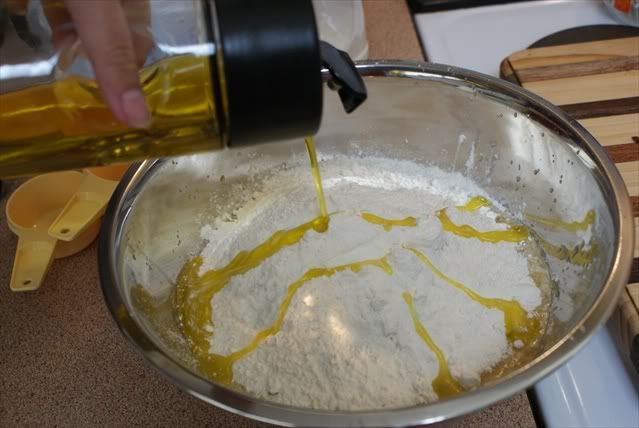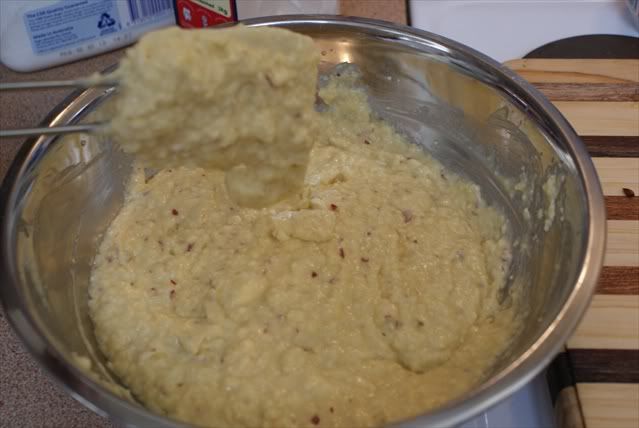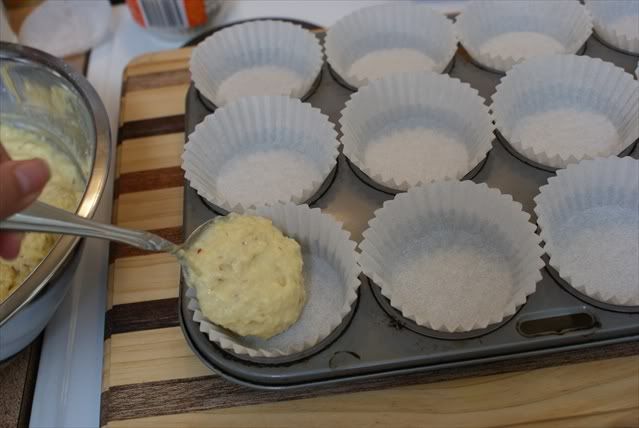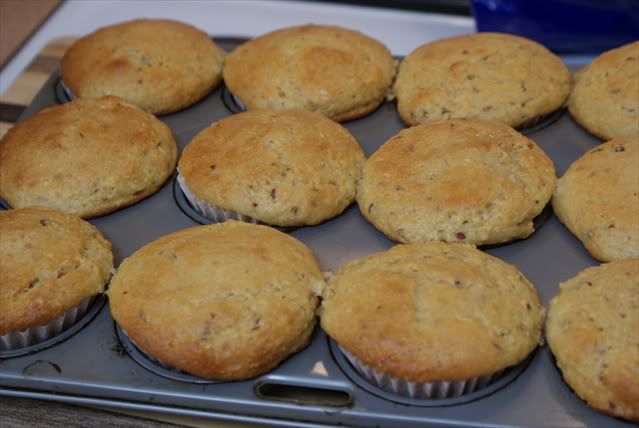I was itching to sew something, but was too lazy to draft from scratch, so I decided I must make something quick and simple. I had some Burda magazines from the library and this little number caught my eye.

I love the simple lines, the yoke, and the pleats, which will allow for a growing belly. This is how it was made up in the magazine-in plaid.

I wasn't too big on it, but I really liked the stylelines, and decided to make it.
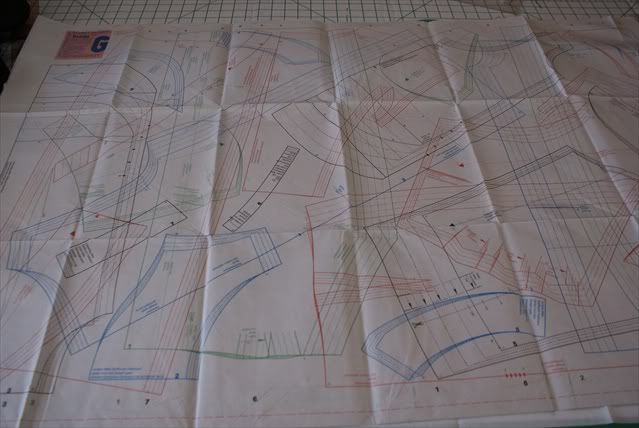
This is the pattern sheet. You have to find the correct colour codes for the pattern which can get confusing. In this case, I'm using the patterns outlined in blue. Burda patterns come without seam allowances, so you have to add them yourself.
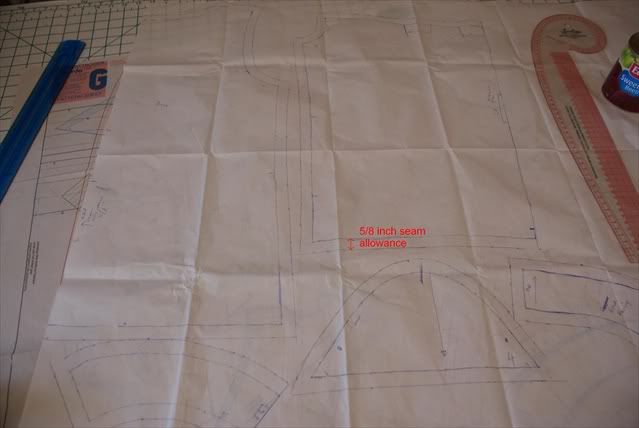
I traced out the pattern using some tracing paper, and added a 5/8 of an inch seam allowance. You can use anything see through that is big enough, such as cheap sew-in interfacing, or even freezer paper taped together.
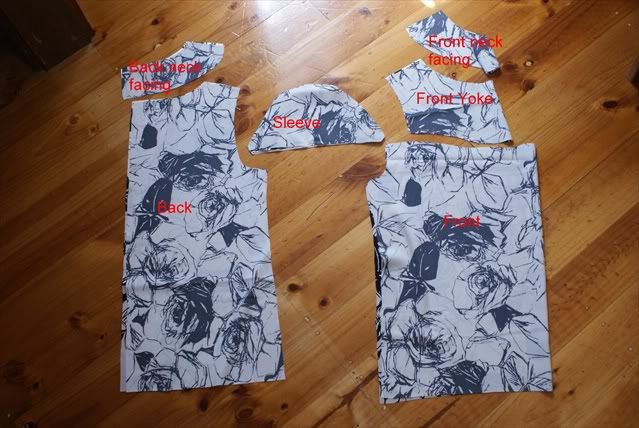
I've cut out my pattern pieces. This is a simple pattern, so only 6 pieces altogether. Should come together pretty quickly. I've labelled each piece so that you'll know what I'm referring to below.
The pattern markings must be marked onto the fabric at this point. I used to use tailor's tacks, but now I just make a 3/5 inch snip into the seam allowance to mark centre points, pleating points, etc.

I've also cut out fusible interfacing for the facing front and back pieces, as well as the yoke. The fusible interfacing I'm using is a tricot knit, which is suitable for most light and medium weight materials. The interfacing serves to stabilise the area, and by this I mean that it will stop the fabric from stretching as you sew and handle it. It also prevents wrinkles and gives a bit more body to the fabric, although you don't want to use interfacing that is too heavy, as this will change the hand/feel of the fabric undesirably. The interfacing should be cut using the same pattern piece, or slightly smaller.
To fuse, press with an up-down motion on a steam and wool setting till it fuses to the fabric. Wait till cool before moving.
Before stitching anything together, I finish the edges with my overlocker. Or you can use a zigzag stitch with a normal sewing machine.
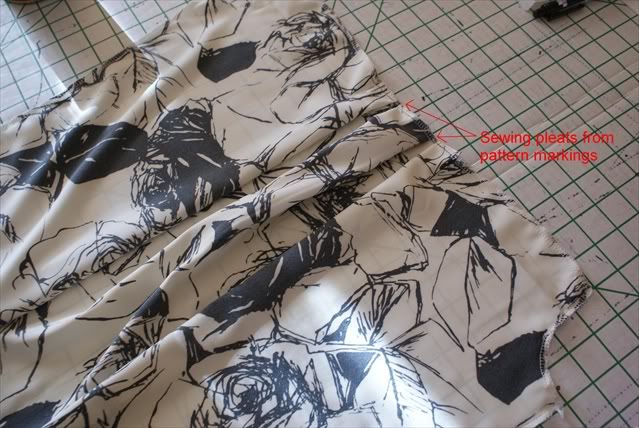
Here, I've stitched the pleats in the front first. My order of construction is always to finish the details on the front garment, piece all front pieces together, then finish back details such as the zipper, and joint the front to the back at the shoulder seams and side seams. The sleeves and hem are last.
In stitching the pleats, the pattern markings and centre points guide me and I don't struggle to measure the pleating afterwards. I stitch vertically at each pleat to keep the pleats together, then horizontally across the pleats and the whole neckline.
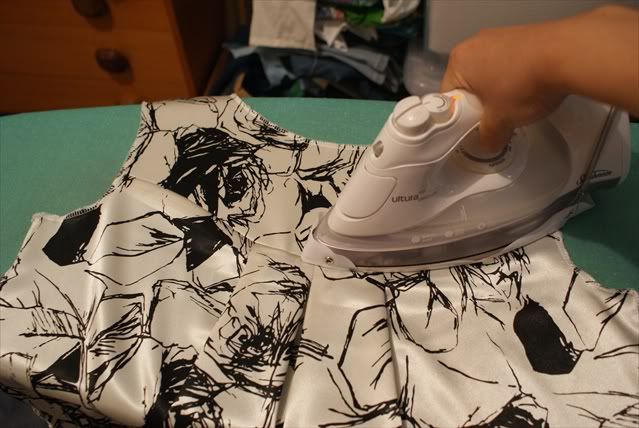
The front yoke is joined to the main front, matching the centre points in the middle. The seam allowance is pressed upwards at the back.

Here's I'm stitching the side seams. The shoulder seams are next. When this is done, test for fit. As this was a loose smock, the fit aside from the shoulders, weren't essential. This top was drafted with a zipper in the back. When I tried it on, I found that it slipped easily over my head and shoulders, so I decided to omit the zipper.
Press the seams open and flat.
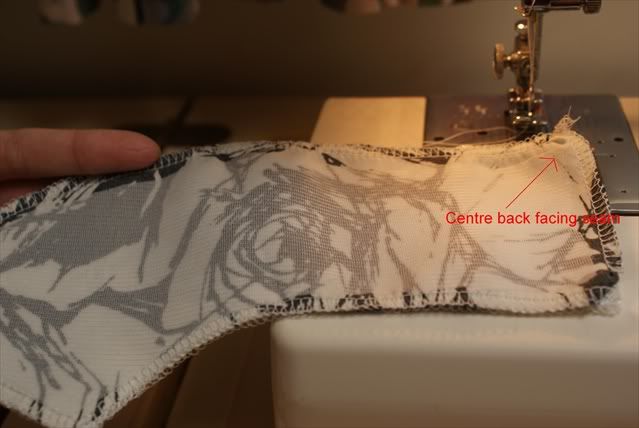
Here, I'm stitching the back neck facings together at the centre back seam. Next the back neck facing is joined to the front neck facing at the shoulder seams.

This is what it looks like. Press the seams open and flat. Remember, sew and press as you go.

Join the facing to the main garment at the neck edge, lining shoulder seams on both facing and main garment together. Make sure the centre points of the facing matches the centre point on the main garment. Sew with 5/8 inch seam allowance.
When this is done, turn the facing underneath and this finishes the neckline edge. However, you will find that it flips upwards very inconveniently. To remedy, you'll need to understitch.

Open up the facing, and use your fingers to press the seam allowance towards the facing. Position your needle so that it is close to the seam line, but not on it, towards the facing. Sew the seam allowances to the facing. This is called understitching. This keeps the facing from flipping up a certain extent. However, you'll need to clip the seam allowance as per below.
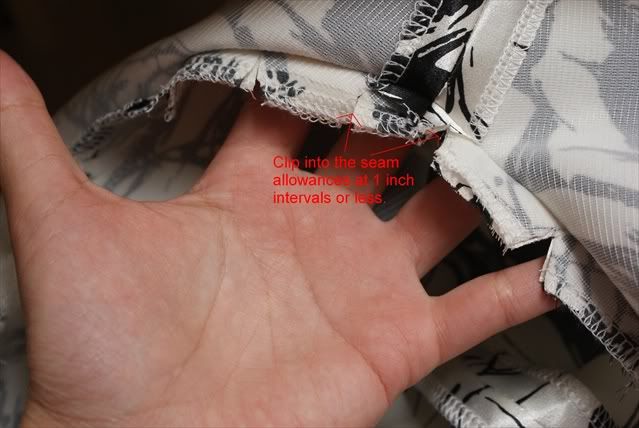
Clip at 1 inch intervals, or less where there is a sharper curve. This releases the fabric and lets it lie flat when you turn the facing under. Be careful to clip close to, but not onto the stitching line.
Next, we finish the hem on the sleeve.
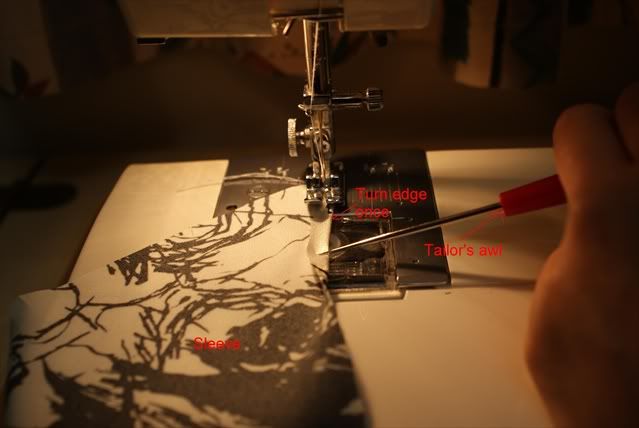
I'm doing a double rolled hem by hand-you can do it by a narrow hemming foot, but I wanted to try this technique instead. Turn the edge wrong sides together around 1/4 inch and sew close to the edge. Using the tailor's awl helps immensely as the sharp point guides the hem under the presser foot.
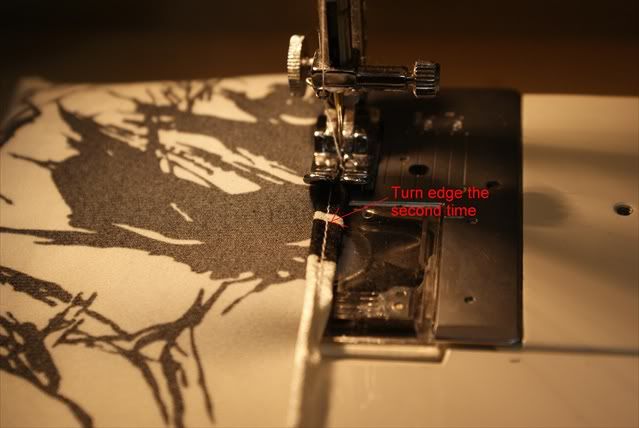
Now turn over the second time and do the same. Press the hem flat.
Before sewing the sleeve into the armhole, you have to prepare the sleeve for 'easing'. The sleeve cap is drafted with extra length, usually about 1-2 cm longer than the armhole. The extra fabric must be eased into the armhole without puckering. This can be a challenge, but with practice comes perfection. To prepare the sleeve, sew a gathering stitch (I use the longest stitch length) inside the seam allowance.
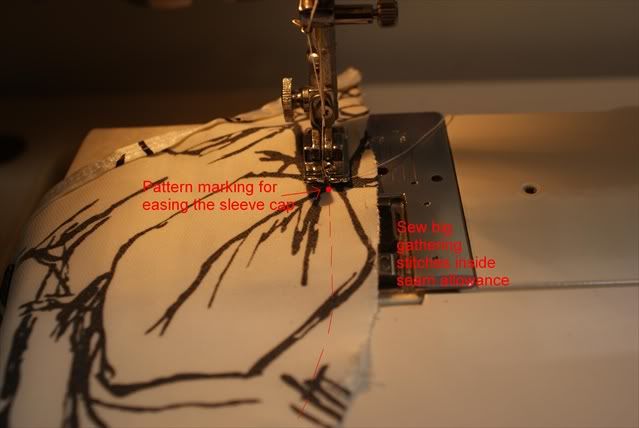
The pattern will have a dot/mark where easing begins. Sew from this point with big stitches. Do not backstitch. Leave a long thread length at each end.
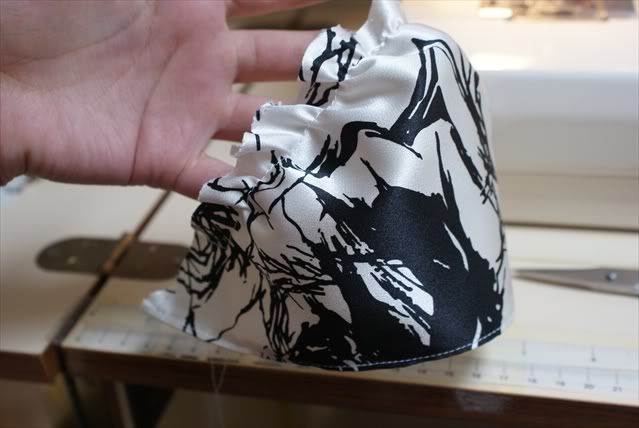
Pull the gathering threads and gather the sleeve cap evenly. The gathers must be 'gentle' rather than 'hard'.

Pin the sleeve cap onto the armhole wtih as many pins as you need. As this is a cap sleeve, and not a full sleeve, find the markings on the armhole where the sleep cap begins and ends. The 1/3 of the lower armhole will be finished with a bias binding. Stitch sleeve to armhole at 5/8 inch seam allowance.
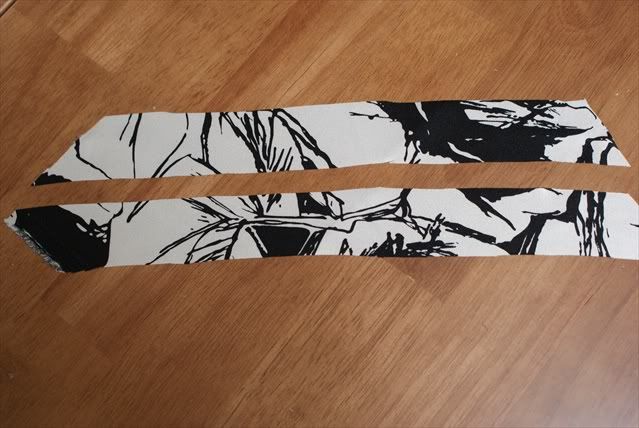
For the bias binding, I cut 1 inch strips on the bias, 16cm in length. These need to be folded in half and pressed. As this is on the bias, it is stretchy and can be shaped into a curve by pressing, as per below.

To attach the binding to the lower armhole, pin the so that the folded edge sits 2.7cm from the armhole edge.
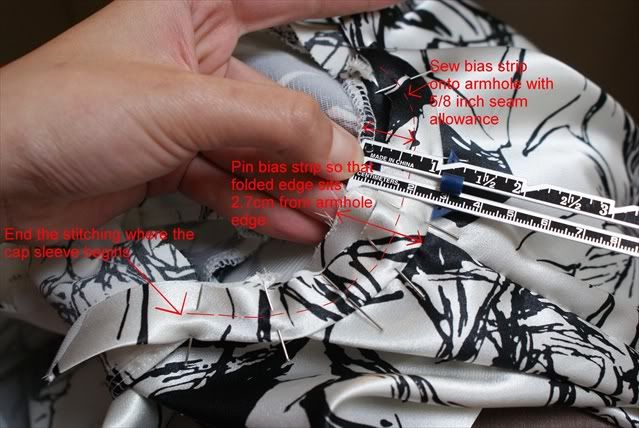
Why 2.7cm? Because it is 5/8 inch plus 1cm. And when you stitch it in 5/8 inch from the armhole edge,and turn the bias binding under, it will match the finished edge of the cap sleeve perfectly. Magic!
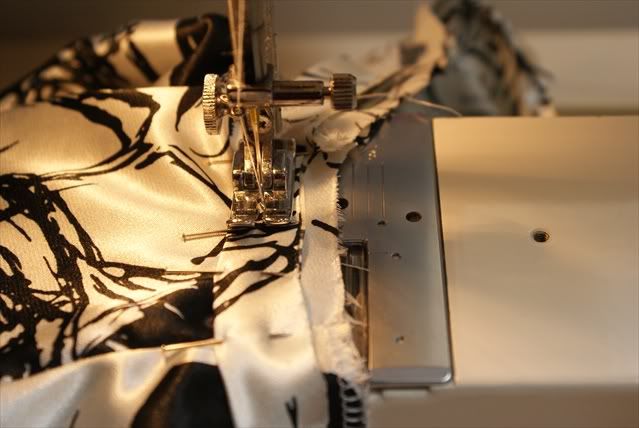
Sew 5/8 inch from the edge of the armhole, catching the middle of the bias binding.
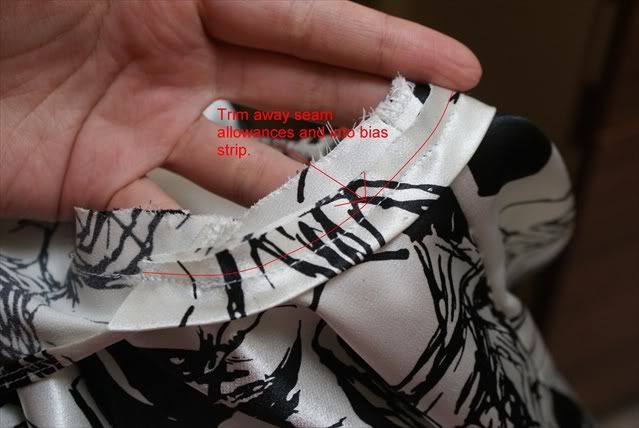
Trim aways the ends of the binding, and the seam allowance so that only 1/4 of the bias binding remains.
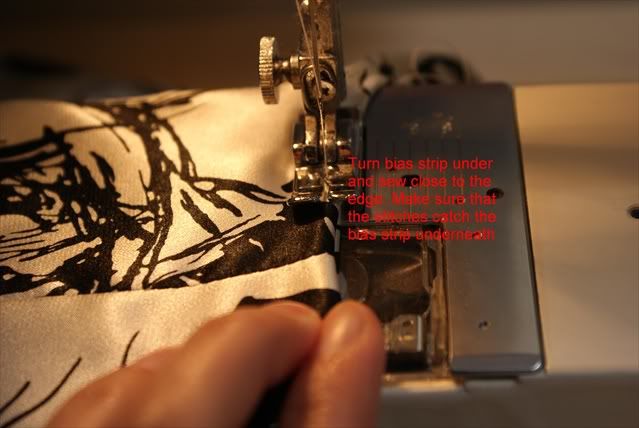
Turn under and edgestitch close to the edge, making sure the stitching catches and holds the bias binding underneath. Press flat.
Hem the bottom with a double rolled hem.
Finito!

Front view.

Back view.

Closeup of the front.
I'm rather pleased with this top. However, the neckline does gape a bit. So the next time I use this pattern, I'll do a slight gaposis adjustment. But for now, Merry Christmas everyone!
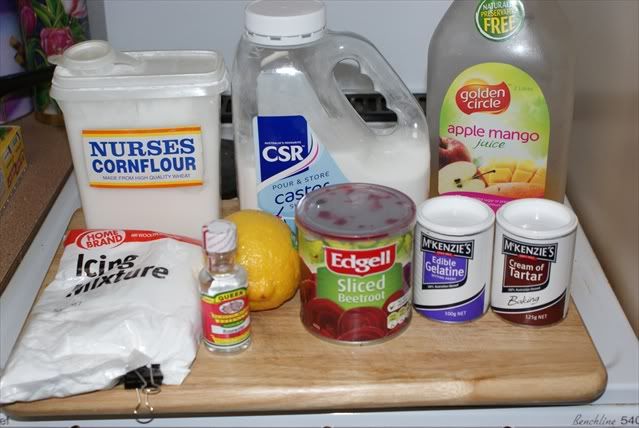 [/caption]
[/caption] [/caption]
[/caption] [/caption]
[/caption]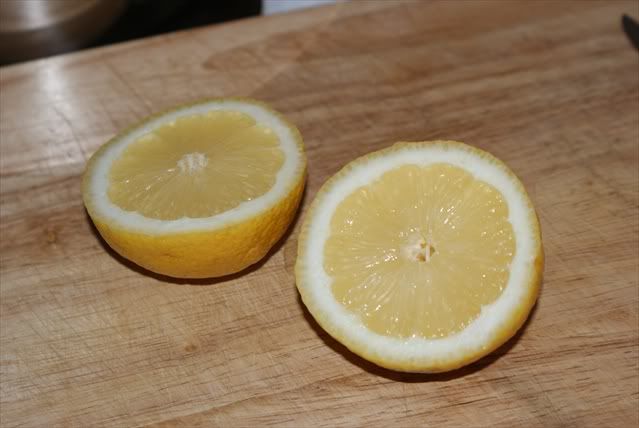 [/caption]
[/caption]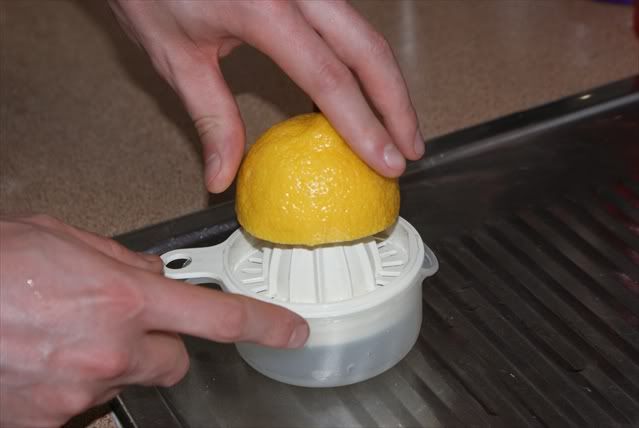 [/caption]
[/caption] [/caption]
[/caption] [/caption]
[/caption]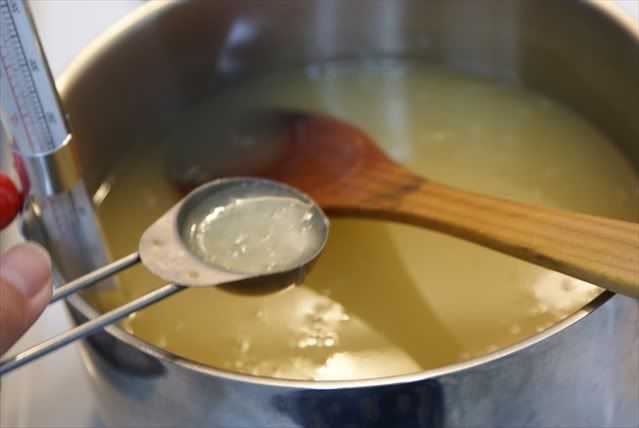 [/caption]
[/caption]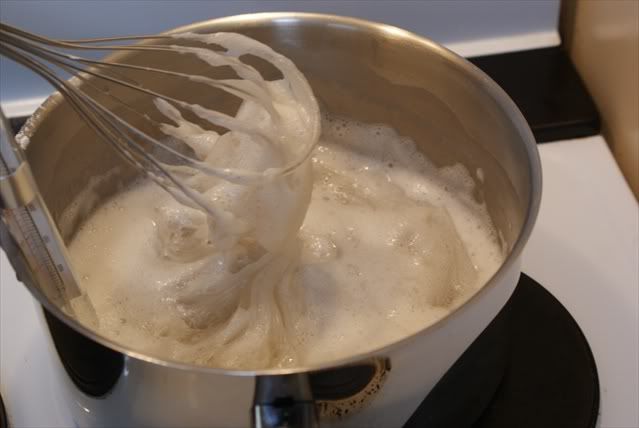 [/caption]
[/caption]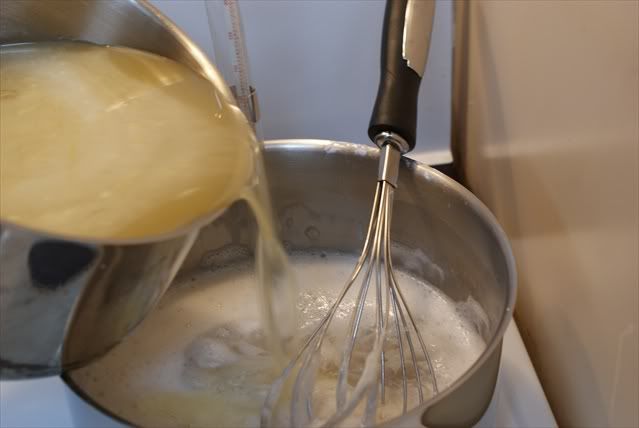 [/caption]
[/caption]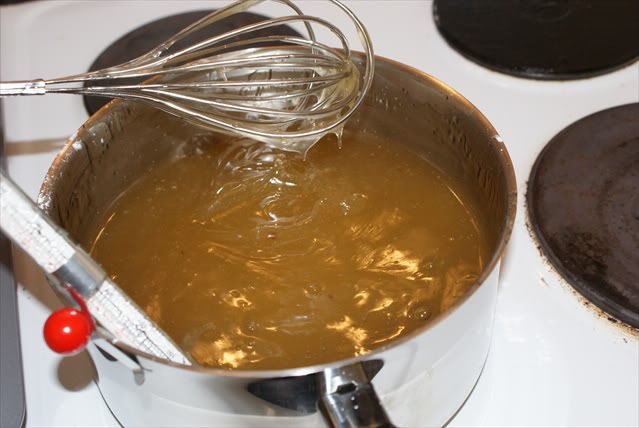 [/caption]
[/caption]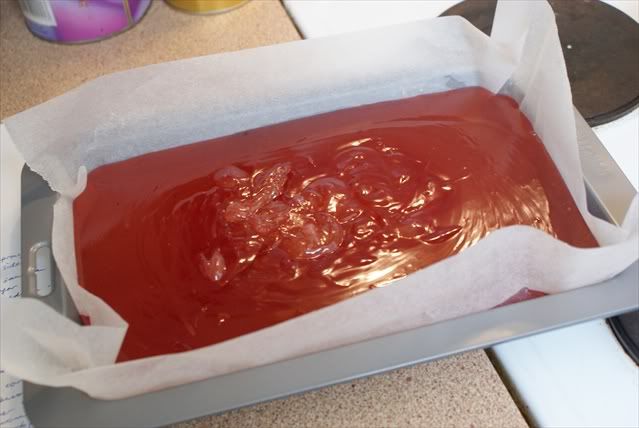
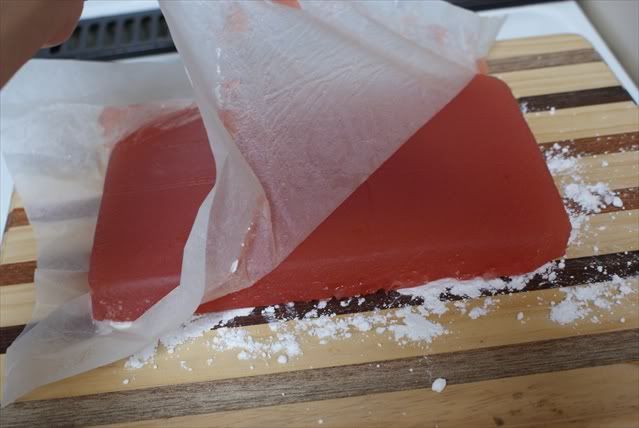 [/caption]
[/caption] [/caption]
[/caption]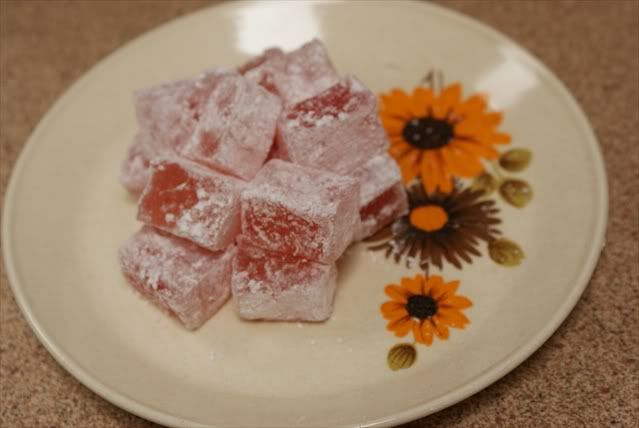 [/caption]
[/caption]
